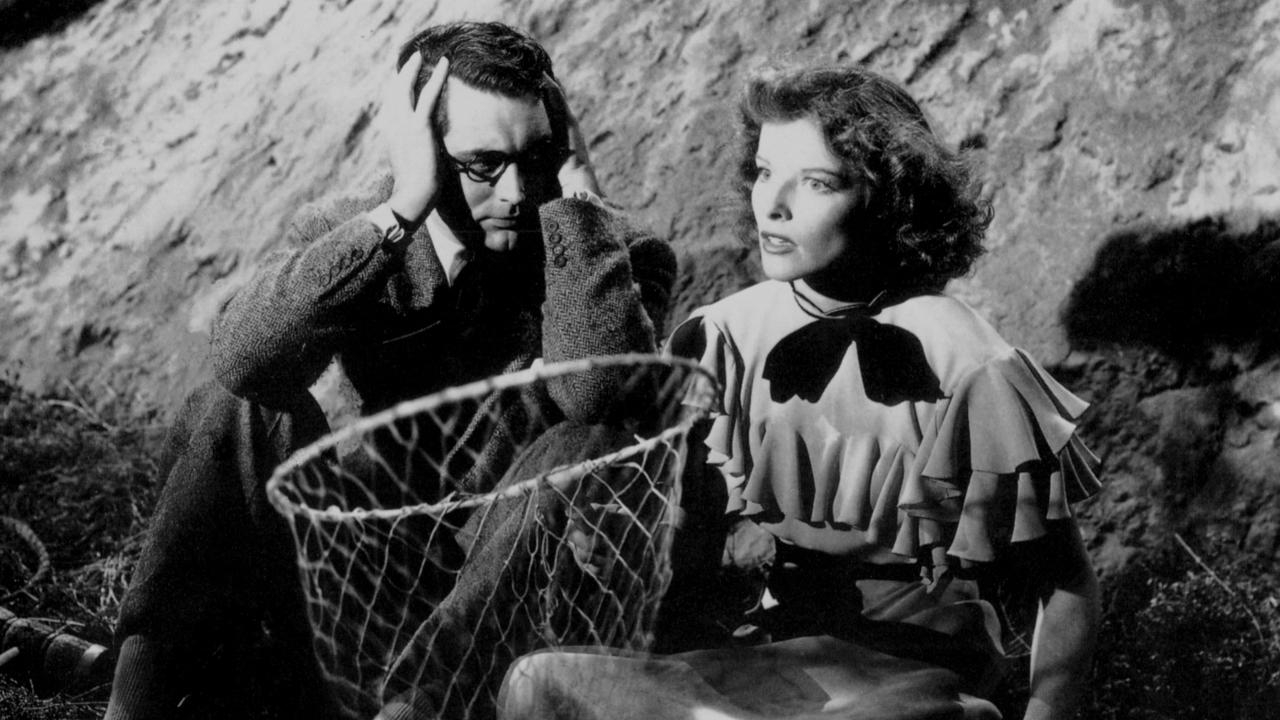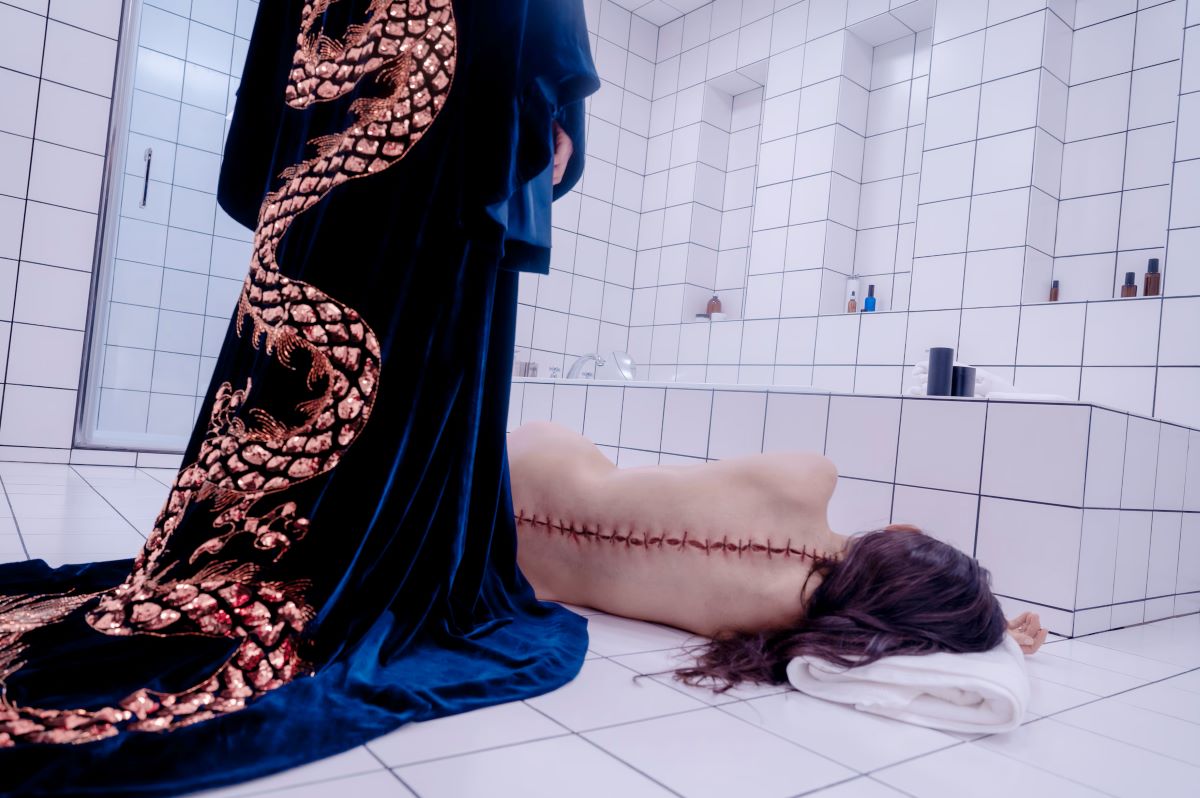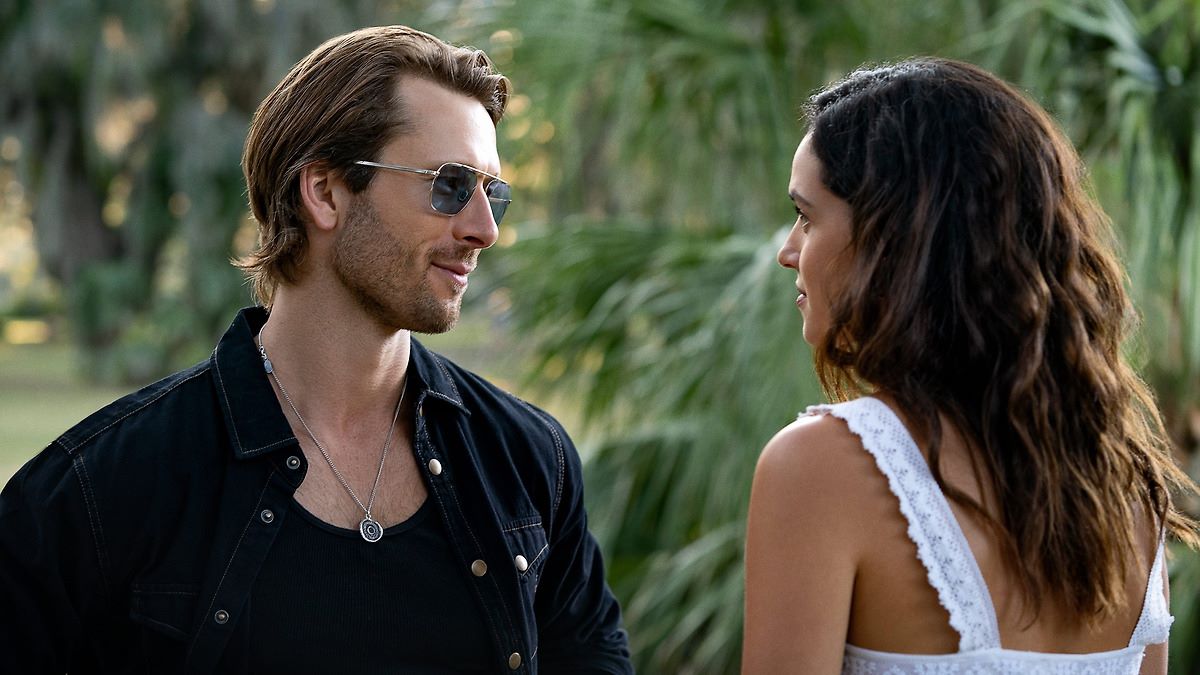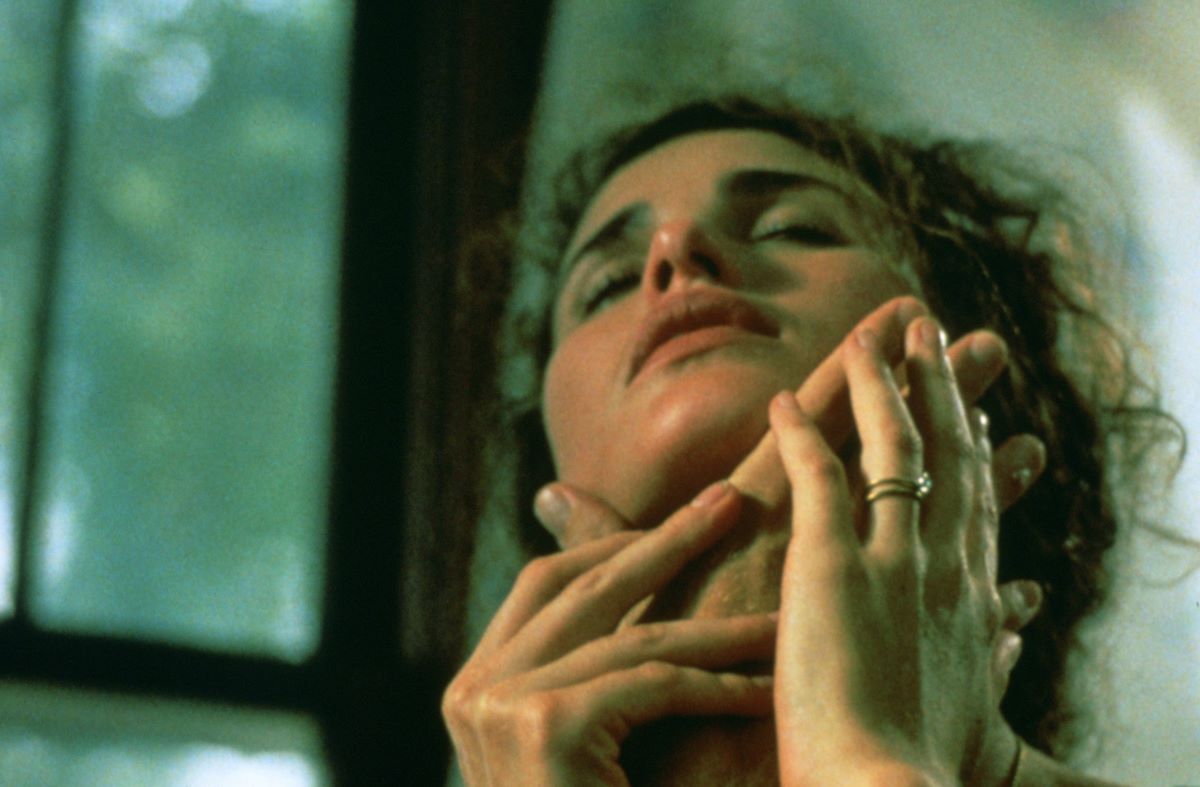Kim Newman’s review of Bringing Up Baby (1938) describes it as the quintessential screwball comedy, initially a box-office failure but later appreciated for its humor. The film, starring Cary Grant and Katharine Hepburn, challenged 1930s cinematic norms with its rapid-fire jokes and unconventional story. Hepburn’s character, initially seen as box-office poison, later regained popularity. The movie’s sophisticated humor, including a famous scene where Grant wears a négligée, is noted for its playful gender role reversals and chaotic plot, featuring a tame leopard and a series of misadventures leading to an unexpected romance. Newman highlights its lasting impact on romantic comedies.
Box-office poison it may have been, but this is the definitive screwball comedy
by Kim Newman
Once upon a time, Haward Hawks’ Bringing Up Baby was remembered as the comedy that was too funny to make money in 1938. Contemporary audiences didn’t much care for Duck Soup, the Marx Brothers’ funniest film, either. But they loved Shirley Temple, so what did they know?
In the 1930s, folks liked comedies to stop every few minutes for deadweight romance scenes or a breezy song. Woe betide the moviemaker who cheated them by delivering big stars torn between infatuation and irritation, tossing wisecracks around or crooning I Can’t Give You Anything But Love, Baby off-key to a leopard. It took a few decades for filmgoers to get hip to the joke-a-second, nothing-sacred laughterfest — witness the smart, live-action cartoons that came along in the 1950s (The Girl Can’t Help It), the 1960s (The Producers), the 1970s (What’s Up, Doc?), the 1980s (Airplane!) and beyond.
In 1938, Cary Grant was on his way to becoming a big enough star to weather a flop, but Katharine Hepburn suffered the indignity of being labelled “box-office poison” and never again dared to be as ferociously scatty as she was in Baby. Ironically, she re-established herself two years later with The Philadelphia Story, another screwball teaming with Grant. In that, Hepburn took the traditional role of the pursued heroine and Grant, a patsy in Baby, got to do the chasing and mouthing off. Proprieties were restored, huge audiences turned up, Academy Awards were won, a musical remake came along (High Society) and Grant and Hepburn went into career overdrive. Watch the two films back to back, however, and you’ll admit the delightful Philadelphia Story is a heck of a lot less funny than Bringing Up Baby.
Recently, Baby’s reputation has shifted again. One tiny clip has been recycled over and over in documentaries like The Celluloid Closet, skewing interpretation of the movie. The scene comes halfway through, as Dr. David Huxley (Grant), a stuffy palaeontologist, has been duped by Susan Vance (Hepburn), a wealthy wild child instantly smitten with him, into fording a shallow stream which turns out to be six-feet deep. While she dries his clothes, he is forced to wear one of her fluffy négligées. Aunt Elizabeth (May Robson), whom David is trying to persuade to give a million-dollar grant to his museum for work on a brontosaurus skeleton, turns up with “big game hunter” Major Horace Applegate (Charlie Ruggles). Elizabeth asks David why he is dressed like that. He jumps up and shouts, “Because I just went gay all of a sudden!” It’s plain from the line reading that Grant is using ‘gay’ in the sense of ‘maniacally lively’ not homosexual, but the négligées looks suggestive when the clip’s seen out of context.
It’s not that the film isn’t sophisticated about sex — Major Horace, the spinsterly big game hunter, is a typical 1930s film sissy, and Ruggles gets sly laughs out of stuttering accounts of unlikely jungle exploits and fussy attempts to imitate a leopard’s screech. The point of the scene is that Cary Grant has turned up in a film, presumably to play a Cary Grant part, and found himself cast as the heroine (Hawks would play this more obviously in I Was A Male War Bride, where Grant is in actual drag for half the picture). A typical romantic comedy of the 1930s (and beyond) goes something like this: free-living but disreputable Boy (say, Fred Astaire) meets straight-laced but incipiently sexy Girl (say, Ginger Rogers), but their immediate attraction is set aside because she is given contrived cause to dislike him and, furthermore, is engaged to a man unworthy of her (say, the sissified Edward Everett Horton). Boy doesn’t give up, and pesters Girl for several reels, ruining her engagement and somehow winning her over for a happy ending. If you tried it in real life you’d be classed as a stalker and slapped with a restraining order. We’re not kidding — watch Top Hat and be astonished that Fred doesn’t get locked up. Bringing Up Baby tells exactly the same story, only with the sexes switched.
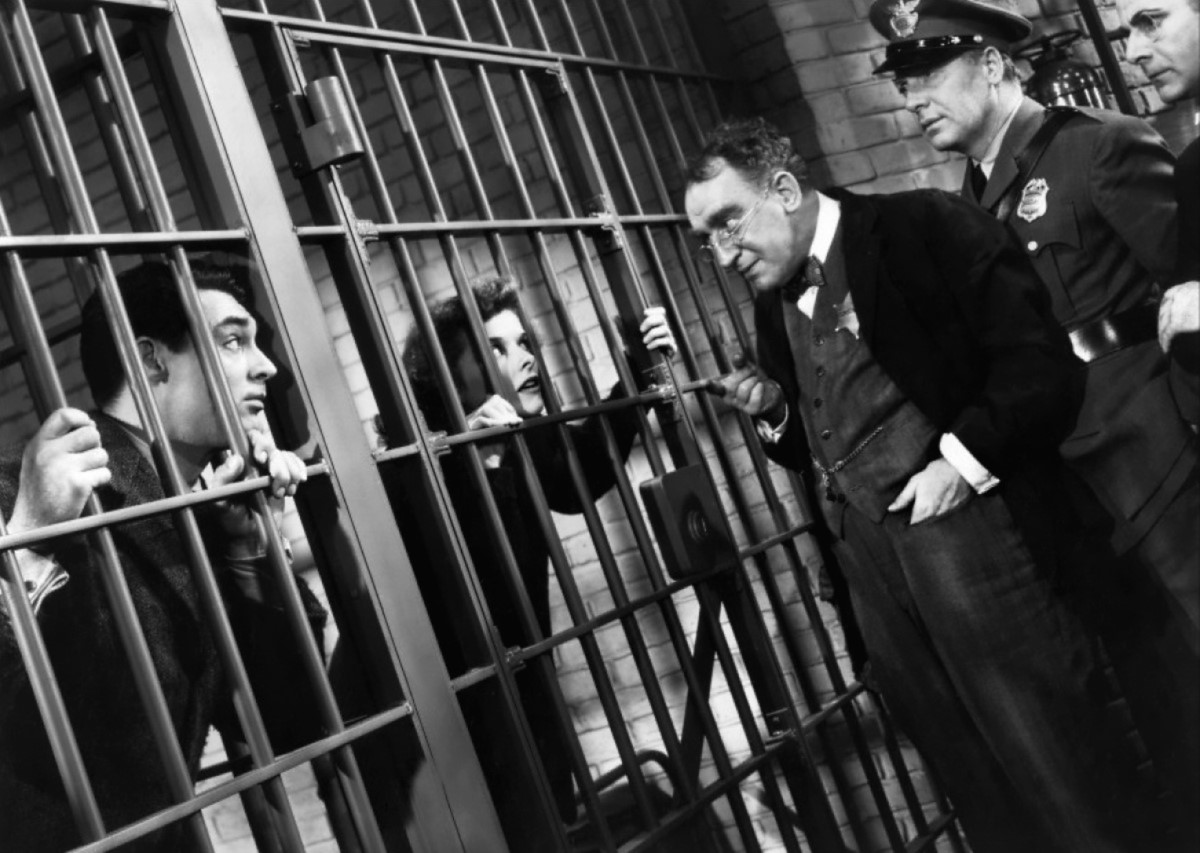
Replacing Ginger’s coded-as-gay fiancé is David’s fiancée Alice Swallow (Virginia Walker), who dresses like a man and insists their marriage will be unencumbered by children so he can get on with his true calling of putting dinosaurs back together. An added irony is that though Grant is atypically cast as the virginal, hesitant, Clark Kent-glasses boob David, it was this performance which Tony Curtis mutated when ‘doing Cary Grant’ in Some Like It Hot. Grant squirmed in a few other screwballs (The Awful Truth, My Favorite Wife), but he was more usually the ruthless, fast-talking romantic predator (His Girl Friday).
But Hawks, who loved turning things inside-out, isn’t content with getting laughs from Hepburn simply making Grant uncomfortable. In an era when ‘screwball’ behaviour usually meant getting tipsy and insulting a waiter, and screen couples argued over sensible issues like who killed the Thin Man, he assembles a plot that keeps running off like a wild animal, dragging characters along by their leashes. First, there’s Baby — a tame leopard from Brazil who is especially soothed by renditions of his favorite song, and has been mistakenly delivered to Susan when he should have gone to Aunt Elizabeth. Then there’s George (played by Asta, the dog from The Thin Man films), a yapping horror who runs off with the vital intercostal clavicle David needs to complete his brontosaurus and buries it in the huge garden. Then there’s a vicious, nameless leopard who happens to be a Baby lookalike and is set free of its cage by David and Susan, who think he’s the harmless pet. David wants his bone back, even more than he wants the million dollars, and Susan wants to help him, but draws out the process long enough for him to realise that he should marry her. When anyone inside the circle tries to explain to bystanding cops, servants or hangers-on what is happening, they tend to get clapped in jail — which leads to Hepburn’s wonderfully sustained impersonation of a criminal tramp (Swinging Door Susie) as part of her deft jailbreak, and Grant’s despairing admission that he is in a gang of crooks with ‘Mickey the Mouse’ and ‘Donald the Duck’.
The trick of a good romantic comedy is to present two people that an audience wants to see wind up together, then throw obstacles at them. And sure enough, having gone through hell and higher-than-expected waters to avoid her, David finds himself coming around to Susan’s charms. The single moment of serious emotion in the film is David’s shy confession that his whirlwind experience with Susan — apparently a succession of humiliations and indignities — has been the best day of his life. Frankly, it comes close to being the best hour and 42 minutes of yours.
Empire, August 2007

